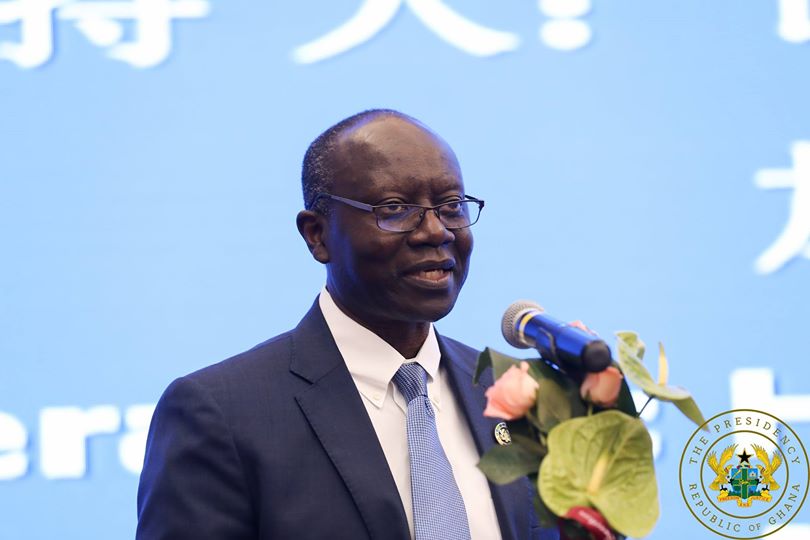INTRODUCTION
Baglo-Buem is a town located in the Jasikan District, of the Oti Region Ghana West Africa with a population of about 3500. Geographical location is 7° 18′ 0″ North, 0° 38′ 0″ East. It is about thirty-three kilometers drive from Jasikan, the district capital and economic hub of the Buem enclave. The natives are of the Buem tribe and the language spoken here is a version of Leleme/Lefena unique to the town an interesting phenomenon among Bueman natives. Despite the short distance between the towns and relative size of the population in the area the language seems to differ slightly from one town to another
Leleme is not taught in the local schools but there is a Bible translation and a few books written entirely in the language. The current chief of the town is Nana Aboliti Boaka III and the queen mother is Nana Buasuma I. The four clans of the town are the Odormia, Odzormia, Oditia, and the Kudubi. The main source of livelihood is farming and produce cultivation: corn, cassava, rice, and to a small extent rubber. The scale of farming is at the subsistence level although the area at one time had a thriving rubber cultivating industry, which supplied rubber to Germany. Germany had been the European power in control of what was then known as German Southwest Africa from 1884 until they lost the territory in 1919 after their defeat in World War I. There are unique places of interest within a short walk from the town including the Buem Stone Canopy with canvas and a beautiful waterfall.
HISTORY AND CULTURE.
Natives of Baglo are believed to be descendants of Guans and are thought to be among the first settlers of the Buem enclave. The Guan are said to have migrated here over 1000 years ago from the Mosie Empire. Mosie Empire had existed in the area of present-day Burkina Faso from the 11th Century until the French conquered the area around 1896.
The elders of Baglo strongly object to the accession in some quarters that they had originated from the Ngostie the origins of the ancestors of their Ewe neighbors in Hohoe and surrounding towns. Though the later arriving Ewes invaded the land in a failed attempt to drive them out. They fend off the attack by using their knowledge of the hills and mountainous landscape of the region to their advantage. Other subsequent attempts by the Ewes to push them off the land resulted in a legal battle before the colonial court where the chief and his people were declared the rightful owners of the land. The Ewes were also made to pay a fine of one cow to the chief if Baglo. As early settlers, they played important roles in the protection of land, culture, and traditions of the Buem tribe. They helped fend off the Ashanti expansion efforts in Buem land and were the custodian who concealed the Bueman Paramount Chief Stool the symbol of Buem power and unity from the Ashantis. Residents of Baglo are primarily Christians however the few Muslims and ancestral worshipers or pagans a fess to practice their faith.
Oral history passed down over the years indicates that their first settlement was under a big tree they called Legolo and surrounding areas. As the population grew most inhabitants gravitated toward an area referred to as Omakator (Upper Town). Eventually, Omakator became the final settlement and Baglo was adopted as the name of the town.
Some of the festivals and cultural dances unique to Baglow include the Majolor festivals held around April to celebrate the harvest and cultural heritage. Cultural dances include the Legongo for entertainment and Korkpanja which is performed as part of post-traumatic stress disorder (PTSD) ritual therapy and treatment for warriors returning from war or big game hunters. As with most towns in the area, the designated market day is Wednesday. To encourage a robust turnout, the day is declared a taboo day. Which means no one is allowed to go to the farm.
PLACES OF INTEREST
Baglo is home to a beautiful rock formation referred to as the Buem Stone Canopy or Umbrella Rock. It is so-called because of the structure of the rock formation and the layout of the caves and openings. It is about an hour-long hike through the mountains from the town center. After an adventurous hike to the top, there is a spectacular bird side view of the ridges and evergreen vegetation.

Certain areas under the rock are considered sacred grounds because it is home for the gods of the town and is believed to have provided refuge to the people and a place to hide the Bueman Traditional Royal Stool from being taken away during the Ashanti invasion. Today the rock also provides a great deal of adventure for the rock climbing enthusiast. Baglo boasts of beautiful waterfalls and is also probably one of the only few places on earth where the tomb of the catholic priest is in the chapel that is actively being used for daily mass service today. The nearest police station and hospital are the Jasikan District Hospital and The Hohoe Municipal Hospital. School in town includes RC Primary, Kindergarten D.A J.H. S, Baglo Ridge Secondary Technical School. (BRISTECH)

PROMINENT BAGLO NATIVES
Some of the prominent natives include Rev Father Dogli. In 1921 he was the first Black African to be ordained a catholic priest in West Africa. He spearheaded the translation of the Bible into the local Leleme language and spread of Roman Catholicism in the Bueman area despite fierce opposition to his efforts. He died in 1970 after being a catholic priest for about 48 years. His final resting place is inside the main catholic chapel still in use today. MR. P.C Dorkpor-Prominent Educationist, Nana Barima Bonsi II former Jasikan District Chief Executive. Two young men were among the first black African drafted into the German army to fight for Germany in the first world war. The German administrator at the time was Dr. Gloner. He was revered so much that a street in the town is still named after him today.
Project GhanaQuest consists of a group of amateur anthropologists and historians on a mission to explore the unique history and culture behind the numerous towns and villages and people who live in them across Ghana. To share the story of your town people and culture reach out to us at info@ghanaquest.com





















Solid history of Baglo. Kudos to those who came out with the ideas, to project the tourists in Buem land. This will also give development to the town.